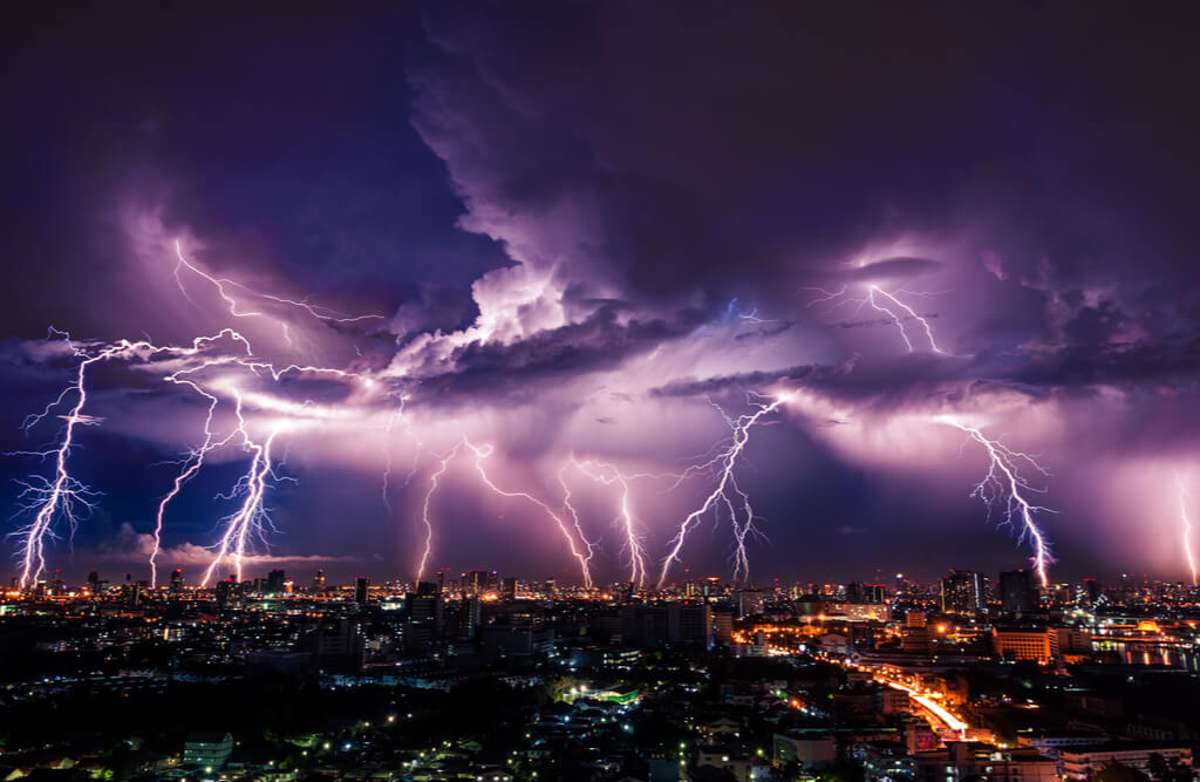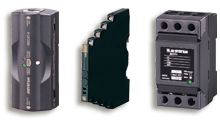Protection from the effects of a lightning strike
Wednesday, 26. October 2022
 |
|
The overvoltage protection
|
|
Did you know that the effects of lightning strikes can damage equipment up to 1.5 km away? The effects of induced surges on connected equipment are even more serious the longer the connecting cable. Every year, there are millions of dollars in damage worldwide from the effects of lightning strikes on sensitive electrical equipment. Further costs are added by the downtime and loss of production or business-critical information.
|
|

|
|
|
Recognize and understand the problem
Humans will have to prepare for severe weather extremes in the future, say climate researchers. Heat waves and severe storms are a consequence of global warming, they say. The weather of the future will be record-breaking.
The electrical charges generated during a thunderstorm discharge into the ground with a current of approximately 20 kA to 150 kA. The overvoltage spreads through the cable and instantly supplies high energy to the electronic devices connected at both ends of the cable. This inevitably leads to destruction!
In the case of discharge failures, a lightning surge creates a very high potential difference between two conductors and the ground. As a result, a discharge occurs between some parts of the circuit and electrically grounded areas, such as the metal enclosure. Electronic components are damaged by some of the discharge current flowing through the circuit.
For critical infrastructure, a thunderstorm should never be a cause for failure. But even for non-critical equipment, an outage leads to high costs and great em ergency.
Protect your plant from the effects of a lightning strike!
The basics of surge protection
An induced lightning is a current source that tries to make the current flow. This current is the lightning surge current. When the current does not flow smoothly, it generates a high voltage and forces the current to flow. The high voltage generated at this time is the lightning surge voltage. The lightning protection device basically discharges the excessive voltage by means of the built-in discharge element via the ground connection, thus protecting the downstream equipment from the effects of this high voltage. IMPORTANT, since both the transmitter and the signal receiver almost always contain electrical circuits, surge protectors are required on both sides.

What to consider when installing lightning protection devices
Grounding
Not only surge protection devices, but also computer systems and electronic devices are connected to the ground to prevent noise interference. The ground wire should be thick and short to prevent a potential difference from building up between the ground terminal of the protective device and the ground of the equipment when the line is subjected to a large increase in lightning current. There are reports that only one of many devices was damaged because it was not connected to ground with a ground wire after the terminal was removed during a routine check.
Insulation test
Before performing the insulation test, you must switch off the surge protection devices, as they discharge during the test and may cause insulation faults. For signal line protection devices, simply unplug the element from the socket. For power line protection devices, remove all ground wires connected to the ground terminal. Reconnect all wires after completing the test.
Encapsulated circuit breaker
A power line circuit breaker usually contains circuit protection that may not be able to handle a lightning surge that exceeds its current-carrying capacity as much as a direct lightning strike, for example. Be sure to use a circuit breaker with a cast iron case. Choose one whose rated current is equal to the maximum load current of the surge protector.
|
|
 |
Products and series for this article
|
Lightning protection devices
|
 |
|
|
|
|
|
|
|
|
|
|
|
back to the overview

